How to create a Mediterranean garden – planting, landscaping and design advice
Create a Mediterranean garden incorporating drought-resistant and low maintenance plants, natural stone and water features for an authentic design
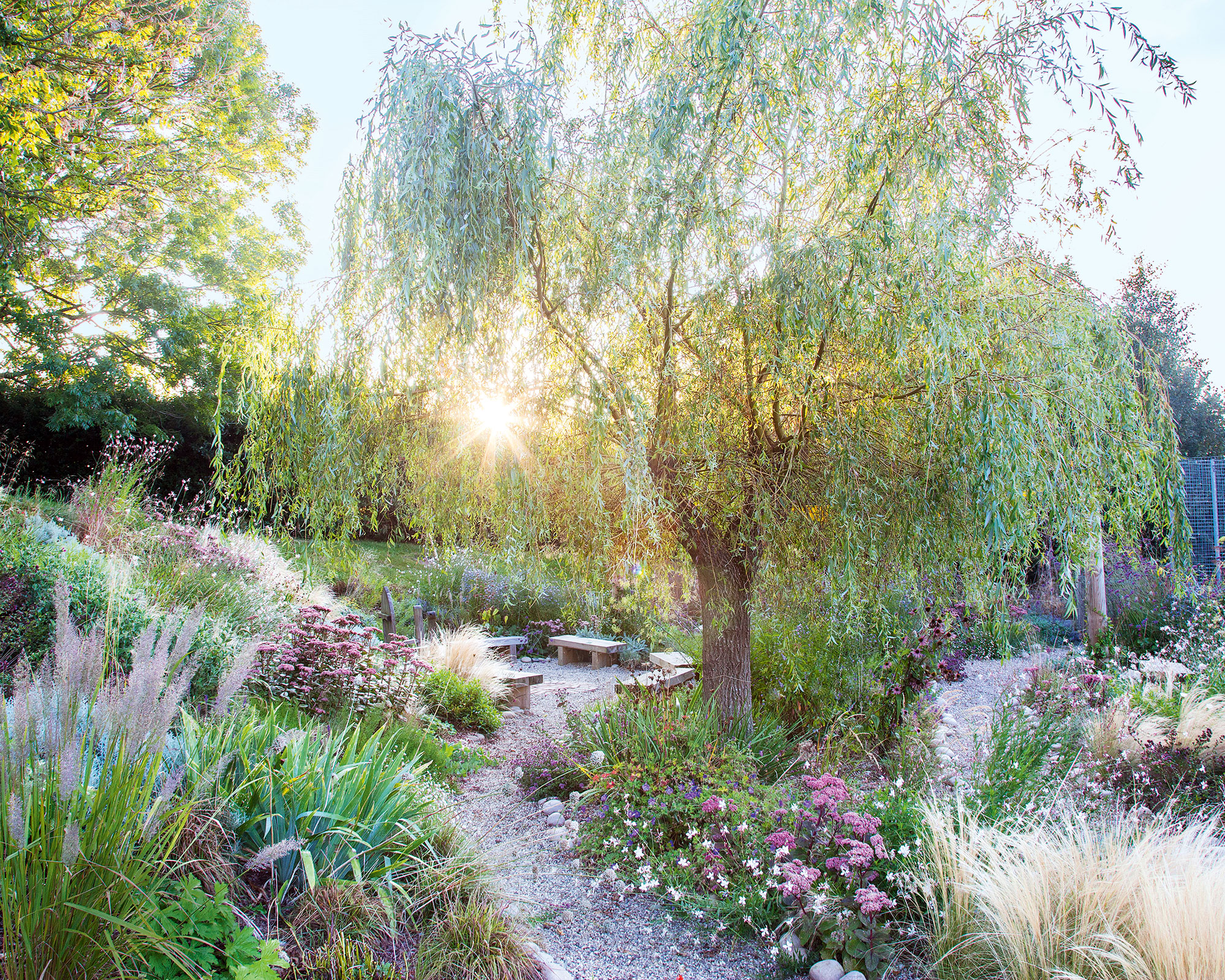
Recreating the feel of a Mediterranean garden is easier than you might imagine. Plus, with predictions of continuing hot, dry summers, making our gardens more resistant to drought is increasingly important.
A Mediterranean garden brims with low maintenance, fragrant and architectural plants; gravel and paving takes the places of time-consuming lawns, and seating areas and potted plants abound, so incorporate some or all of these elements into your Mediterranean garden ideas to recreate the feel of sunnier climes.
The planting palette for a mediterranean garden
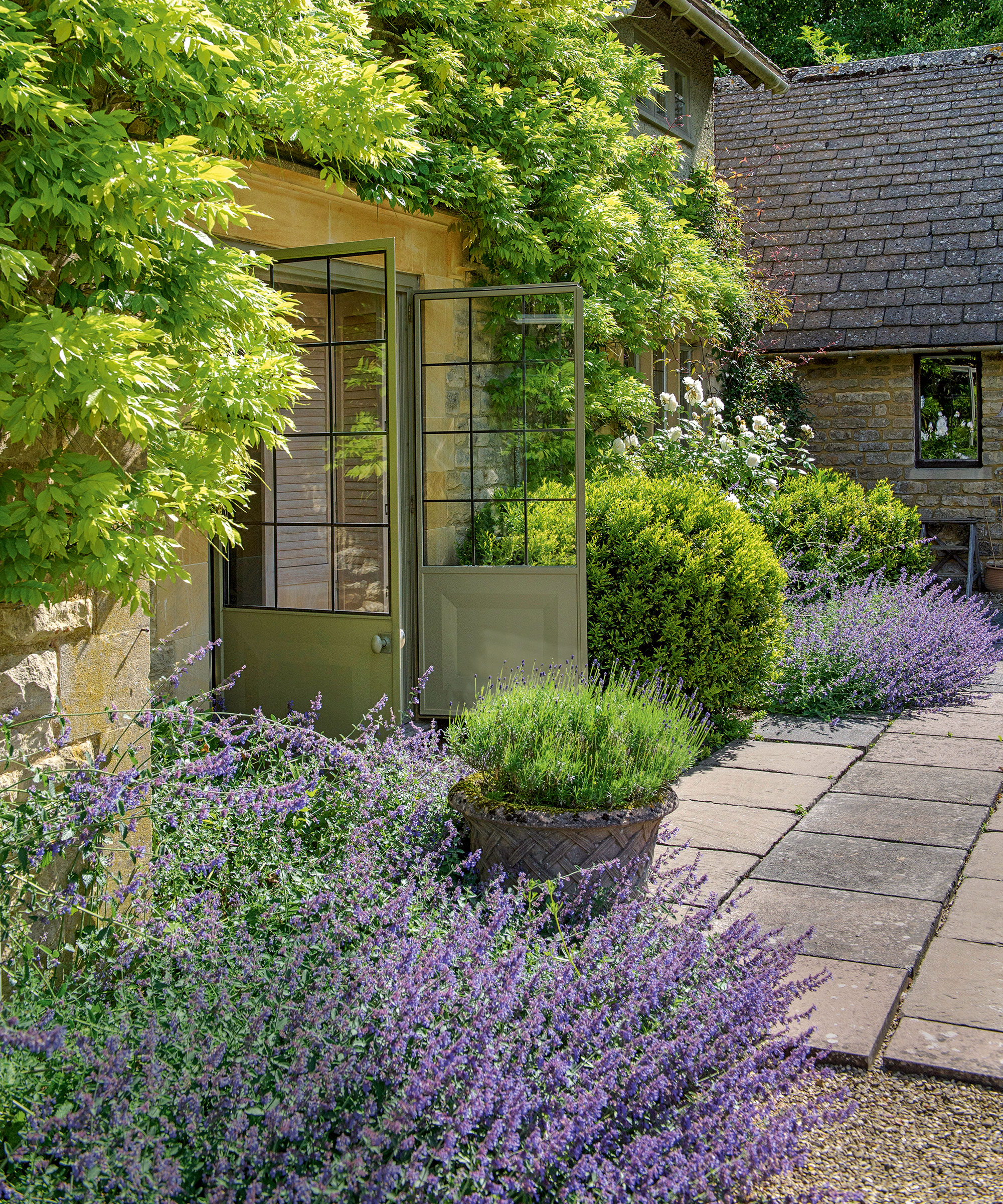
'Herbaceous plantings in dry Mediterranean landscapes are risky; the more herbaceous planting there is, the more hay there will be in the all important summer months. While that spring flush is a real joy, the garden must hang on through the drier months of the year,' explains award winning garden designer James Basson of Scape Design.
'Evergreen shrubs form the bulk of our plantings i a Mediterranean garden; they are the most reliable for interest. Shrubs may stop flowering but they hang around all summer and show a variety of texture and form. Plants like Pistacia lentiscus or Juniperus phoenicea are really important so that the structure is very long lived,' James adds.
Mediterranean garden plants to include
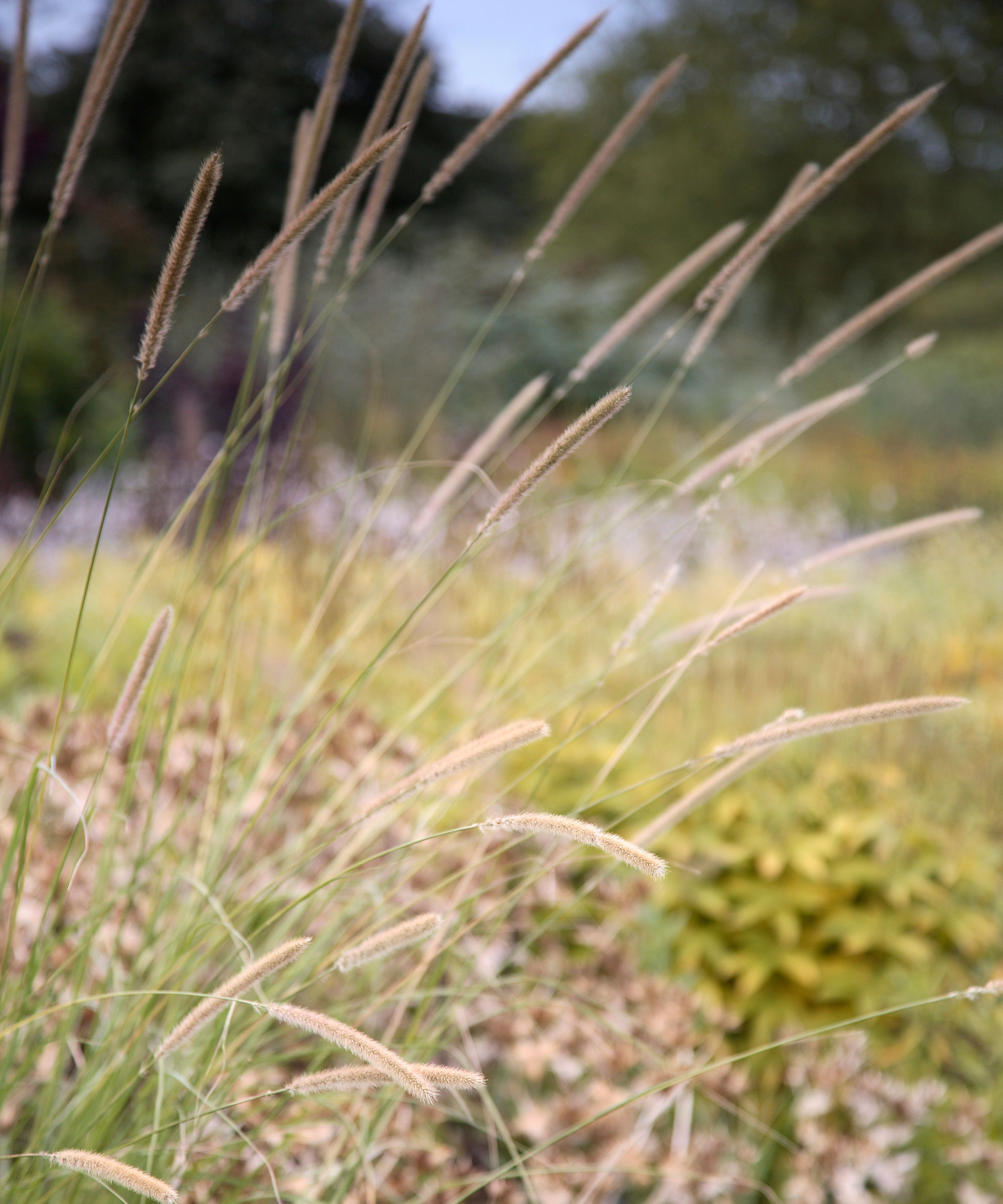
Evoking the feel of a Mediterranean garden involves experimenting with an array of different plants.
You needn’t live in Italy or Spain to incorporate herbs, shrubs and flowers from such countries into your flower bed ideas – you can recreate the feel in a sheltered spot in a border or on the patio.
Many drought tolerant Mediterranean plants are those you'll have on a list for planning a dry garden.
'Mediterranean plants are often short lived, and without a careful eye will die out and fade away. The practice in a Mediterranean garden is to prune, to extend the structural quality of the plants when they grow too fast and to selectively weed out plants that we do not want, to leave plants to self-seed where we want them. The longevity of the vegetation is a real part of the selection process,' explains James Basson.
In late winter in a Mediterranean garden you’ll often see acacias and citrus trees in their full glory; in spring crocuses, ornamental grasses, annuals and cistus take centre stage, and into the summer it’s bougainvilleas, pelargoniums, scented herbs, oleander and olive trees that we’re most familiar with. Then, in fall, there’s a smaller burst of beauty with the likes of cyclamen and fall crocuses, with rosemary often flowering the year round, and architectural palms adding height and Riviera glamor.
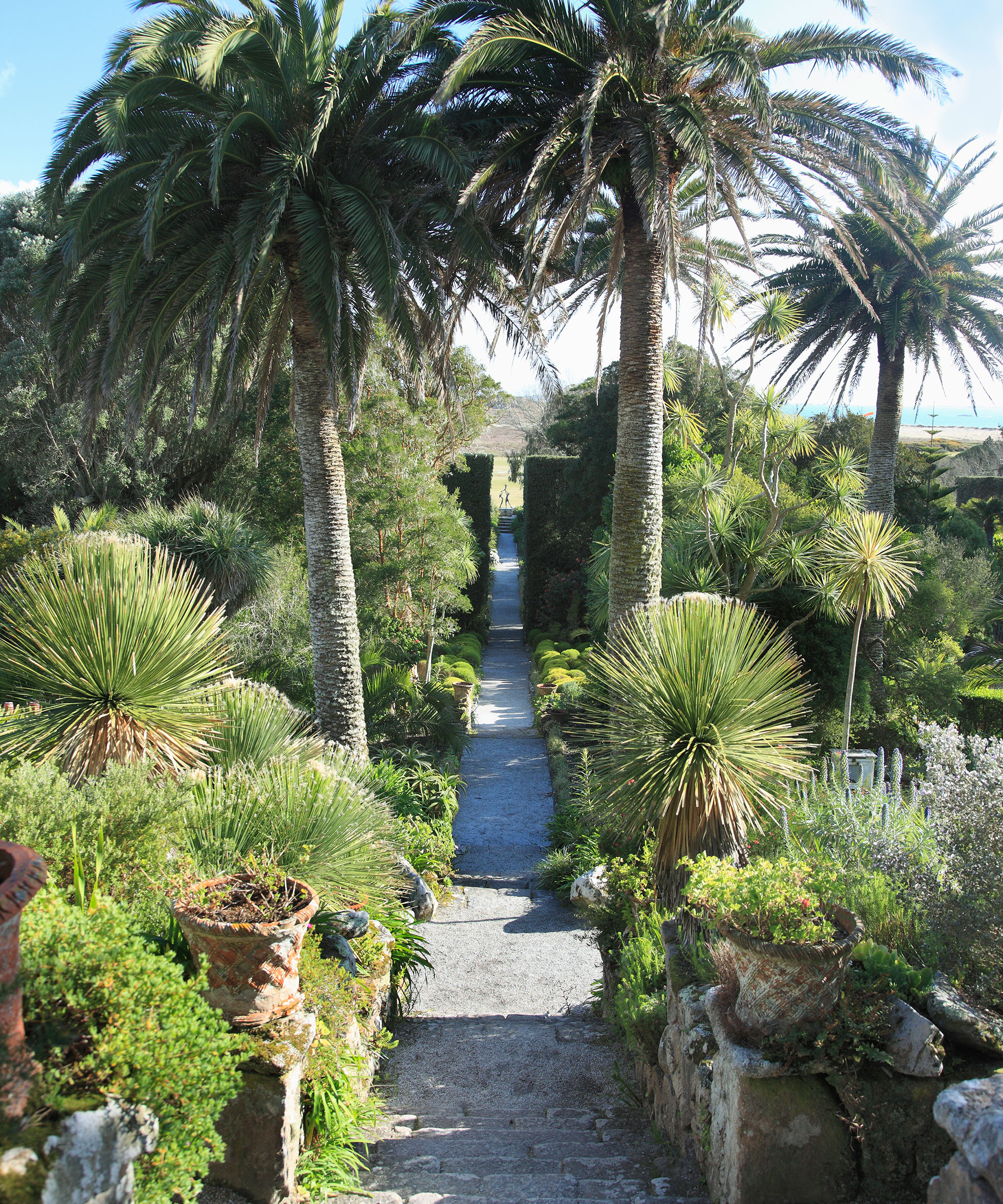
Classic plant choices for a Mediterranean garden include:
- Olive trees
- Citrus plants
- Agave
- Agapanthus
- Lavender
- Rosemary
- Herbs
- Pelargoniums
- Bougainvillea
- Palms
- Cypress
- Yuccas
'Ornamental grasses are useful as they create the glue that can help blend the herbaceous and the shrubby plantings. Good summer structure grasses, such as Hyparrhenia hirta, will give year round interest even once they have gone over to dormancy in the summer months,' says James Basson.
How to plant in a Mediterranean garden
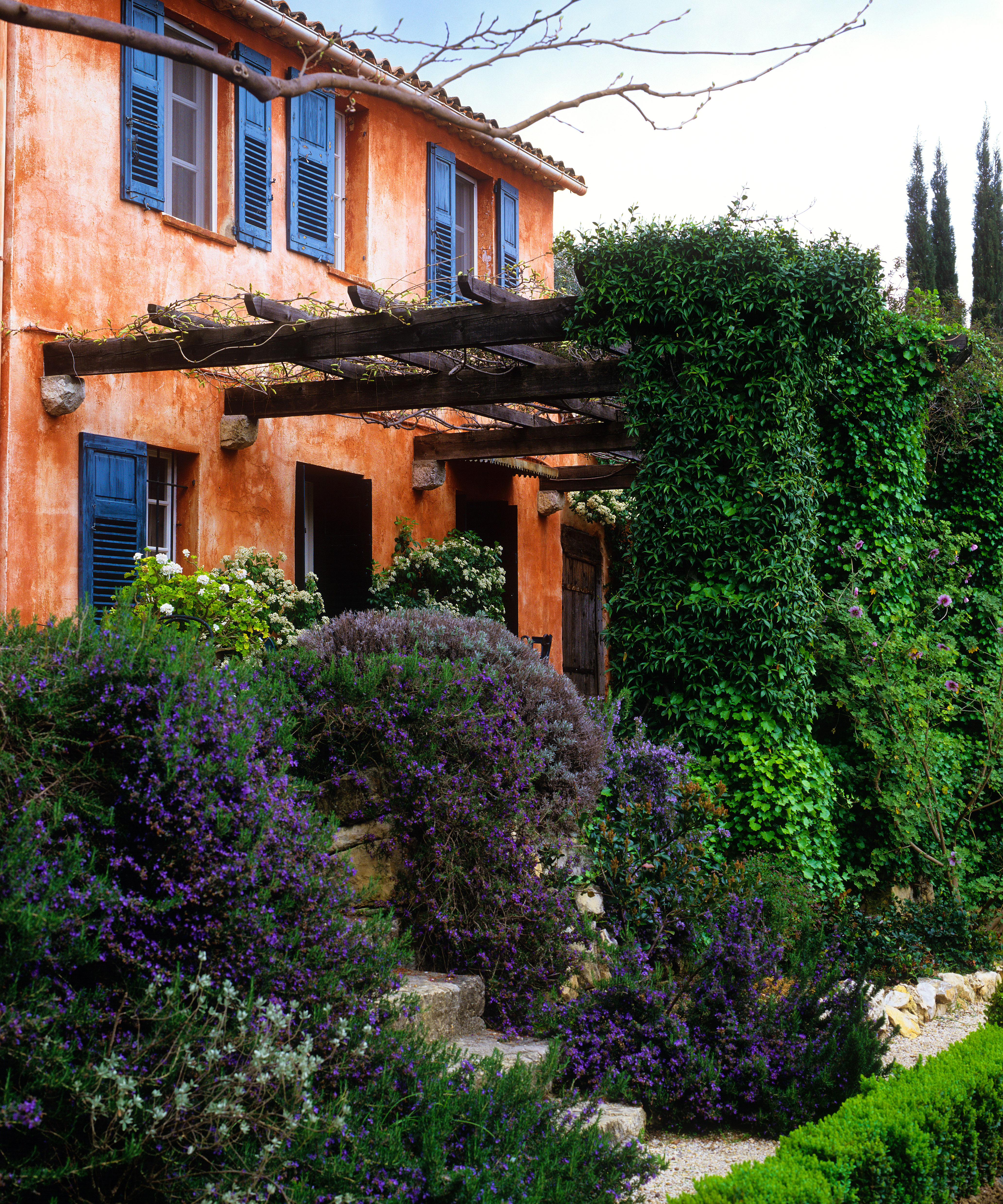
Spring is an ideal time for planting a Mediterranean garden, when the soil has warmed up a little, and to avoid the root rot after wet, cold winters.
Select the right plant for the right place, considering both soil and aspect. The closest you can mimic a plant's native growing conditions the more chance it will thrive with little maintenance required.
'Mediterranean plants have evolved to enjoy long, sunny days, where excellent light quality is key, so avoid planting in the shade of large trees,' advises Peter Jones, garden manager at RHS Wisley.
Peter offers the following tips for planting:
- Mediterranean garden plants prefer free-draining ground, so don't plant them on a site that is waterlogged in winter
- Consider how frost sits in your garden
- A south-facing site that enjoys sun all day, protected from the elements, is ideal
- Mediterranean plants generally prefer nutrient-poor soil, so avoid feeding the soil
- Prune and clip rosemary, lavender and cistus after flowering to avoid them becoming woody and leggy
Many drought tolerant plants will form communities of plants and a key to this style is repeating planting of just a few choices, rather than lots of variety.
Mediterranean garden design ideas
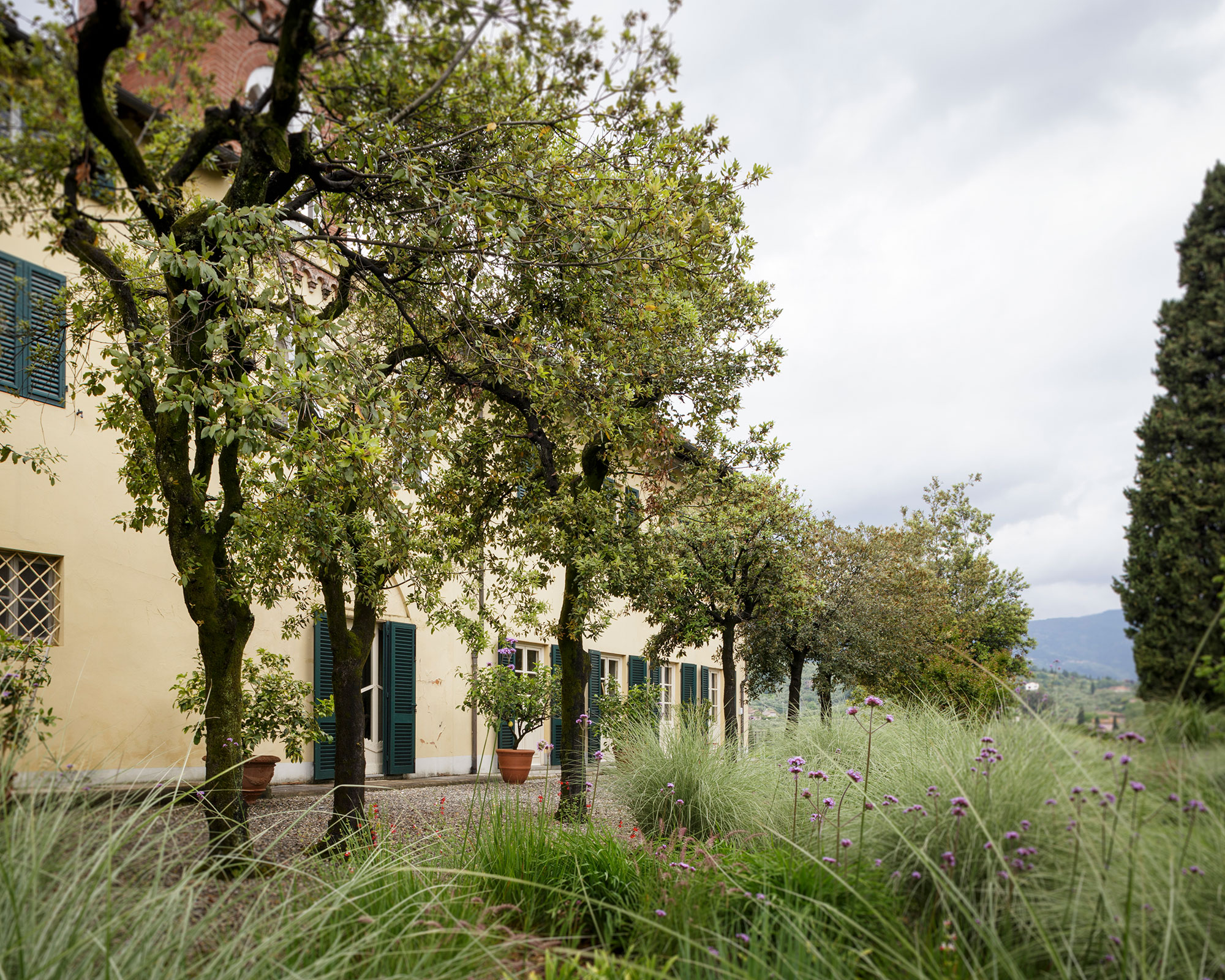
A sunny slope is ideal for creating a Mediterranean garden style as the drought tolerant plants prefer free-draining soil, but any sunny area will work well, with a gravel mulch to keep the crowns dry and to provide an appropriate background.
Consider evoking romantic, windswept sand dunes by weaving a wooden boardwalk through your Mediterranean garden. Take inspiration from rock garden ideas and edge with rugged rocks and gravel to reflect the coastline. Plant ornamental grasses and shrubs that mimic the wild scrubland found in arid areas.
Make the most of dry soil conditions by planting a combination of Stipa gigantea (golden oats), Santolina chamaecyparissus (cotton lavender), nepeta (catmint), salvia and small hebes.
Landscaping a Mediterranean garden
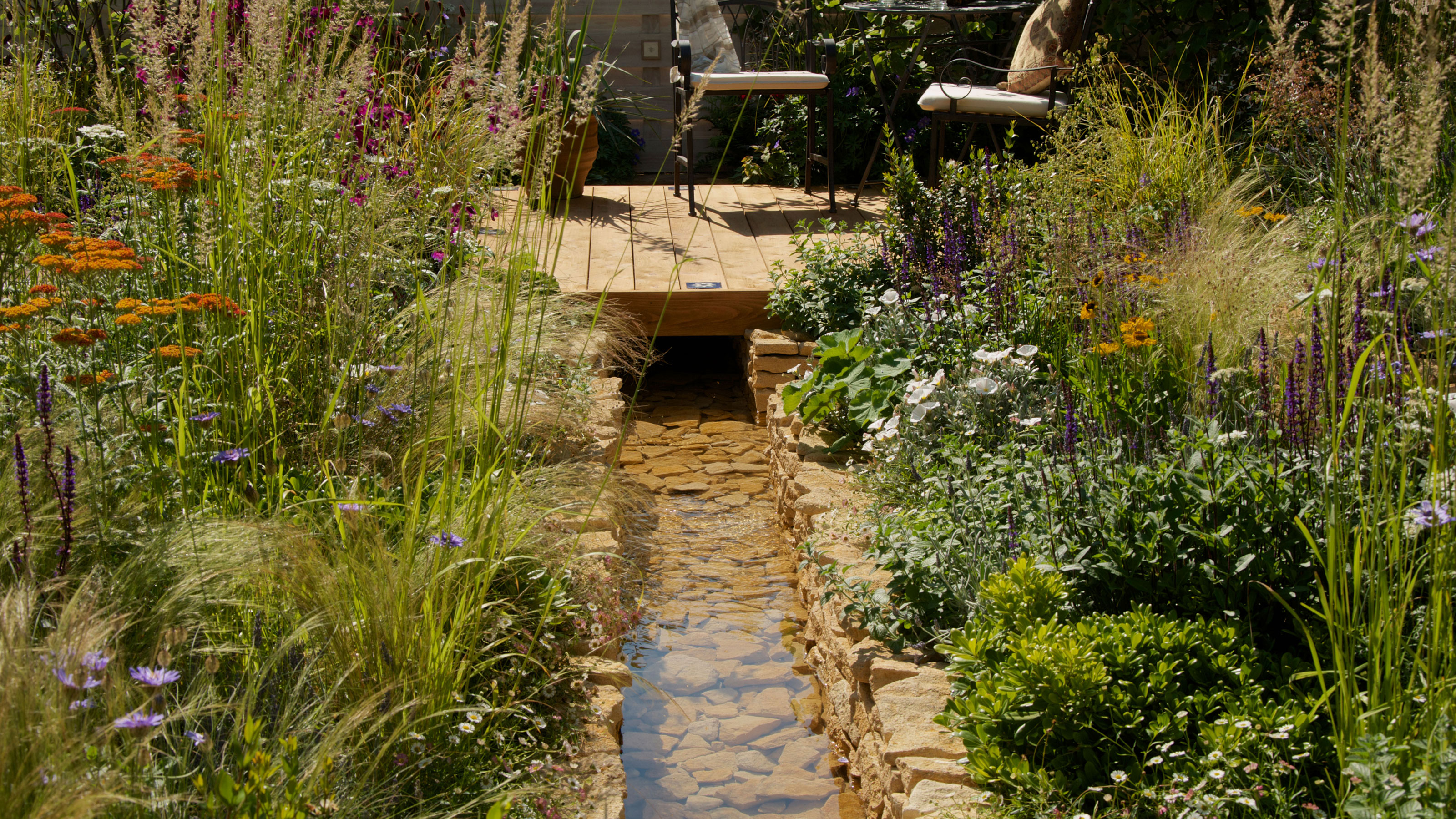
When designing a Mediterranean garden, 'we are keen to work with the natural conditions that make up the surrounding landscape, which we feel helps link our gardens to their sense of place,' explains James Basson of Scape Design.
'The natural landscape of the Mediterranean is mineral; there is a lot of stone. The presence of stone for us breathes space throughout our plantings. It is the pause, the silence between the notes. The irrigated lawn has no place in the Mediterranean, so it is stone, sand, gravel that creates this breath. We use gravel to help manage the competition for space by the plants,' he adds.
Gravel and warm-toned paving are typical of Mediterranean garden style, with terraces created for outdoor dining.
To avoid plants self-seeding in a gravel garden, place landscape fabric over the soil and cut crosses to insert the plants, then add a layer of gravel between. Choose a gravel color to complement that other elements and materials of hard landscaping in the garden.
For a small garden idea this is a practical option, dispensing with high maintenance lawns and instead using gravel or paving as the basis for the design, softened with ground cover and an assortment of containers.
Create relaxed, informal spaces, surrounded by textural, fragrant planting and rustic detailing. It takes some planning to create this weathered atmosphere, with structure and planting working together.
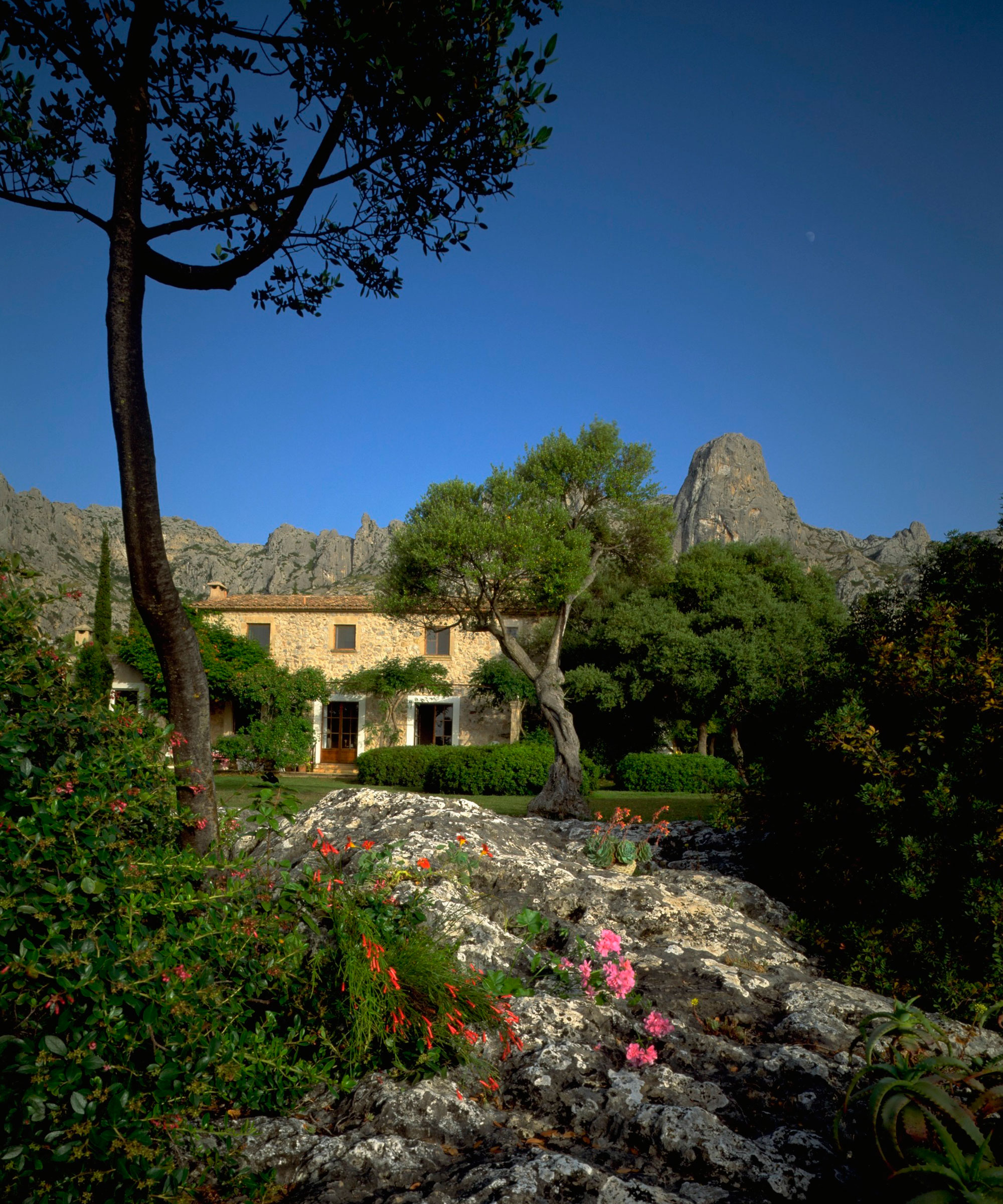
Terraced levels with stone walls, natural stone paving and limewashed walls are also common, or inject some color and pattern with mosaic details in walls, step risers or patios.
'The dry stone wall speaks of the landscape, it is the product of the material to hand. It is without doubt a significant part of the budget for any Mediterranean garden but it is worth doing properly. These walls breathe life into a garden creating level changes and shaping the space,' explains James Basson.
Creating shade in a Mediterranean garden
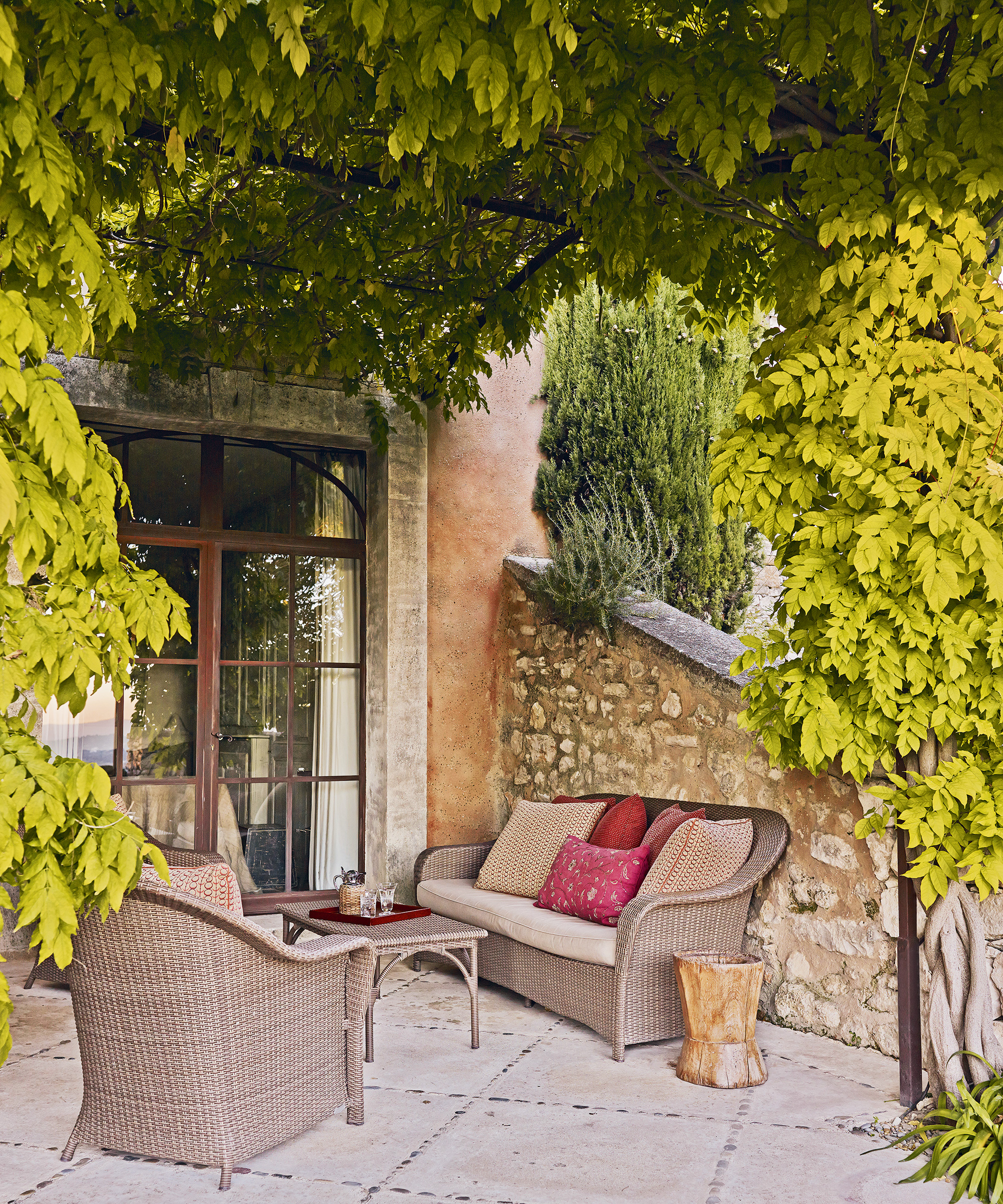
The Mediterranean climate is defined by the summer sun so structures in the garden that offer shade are crucial.
'Pergola ideas and places in the shade are an important part of the Mediterranean garden, without which there is no respite from the intense bright light and heat,' explains James Basson.
'Reed or ‘split cane’ covers, and vegetation perform best in this climate as they create shade but allow for the air to circulate,' he adds.
Flowering climbers or evergreen climbers can be trained to scramble over a pergola or arbour to add both shade, scent and beautiful blooms to enjoy.
This is a great addition to a Mediterranean patio, too.
Water features in a Mediterranean garden
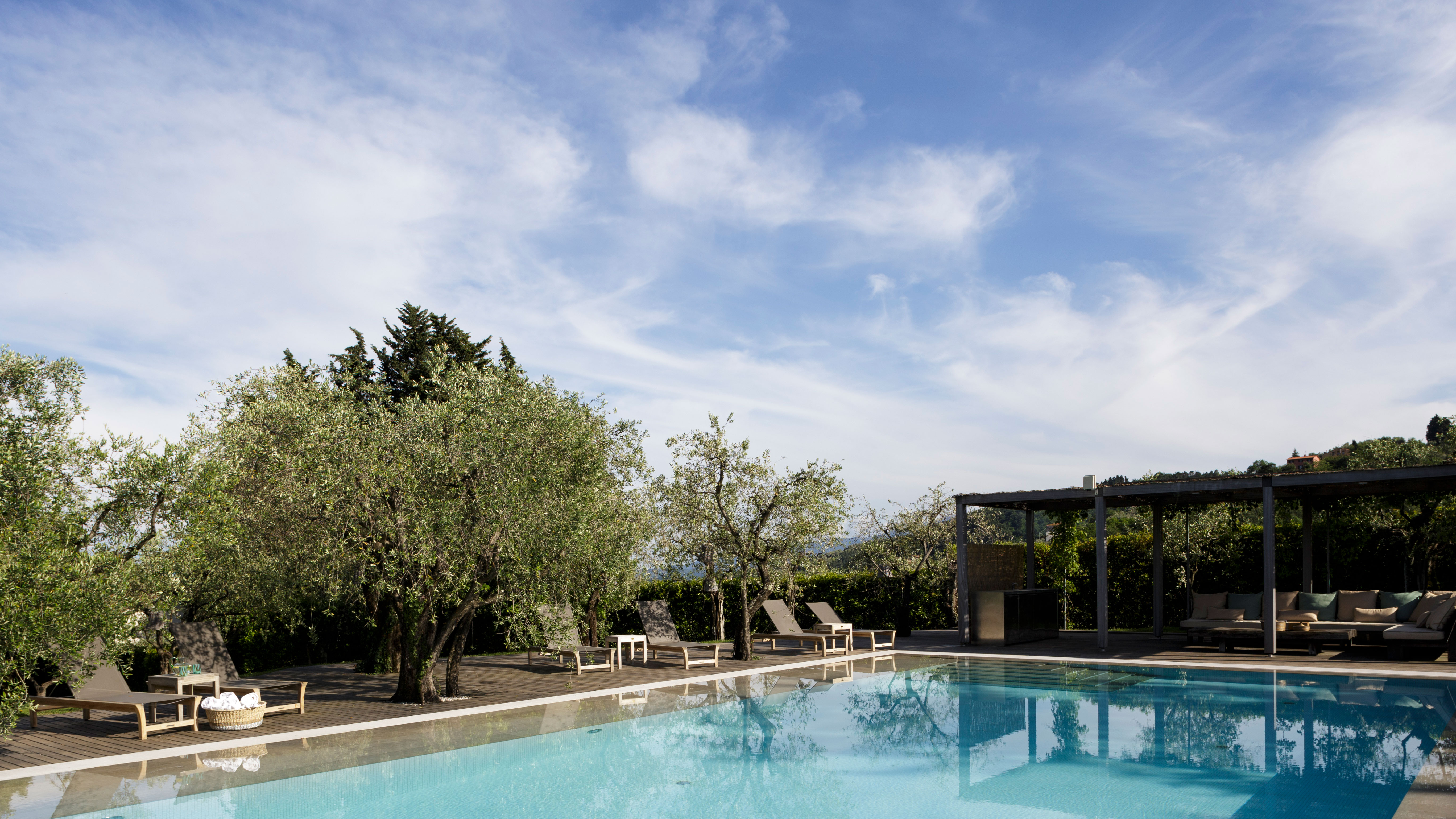
Many Mediterranean gardens include pool ideas.
'Water in the garden gives real value to the quality of space, we feel soothed, and without the presence of water we are soon baked by the summer heat. Pools are in themselves very alien environments to the landscape, so we try to include them by using natural materials and colors,' says James Basson.
Also consider the inclusion of other water features to add a soothing, cooling and calming element. 'Even in the driest of landscapes water emerges, typically at the base of walls at the end of slopes. We are drawn to water and so we incorporate water into Mediterranean gardens to help bring energy and life to areas. The water features that we create often have a brimming quality – this also helps create a general sense of abundance,' says James.
Using pots in a Mediterranean garden
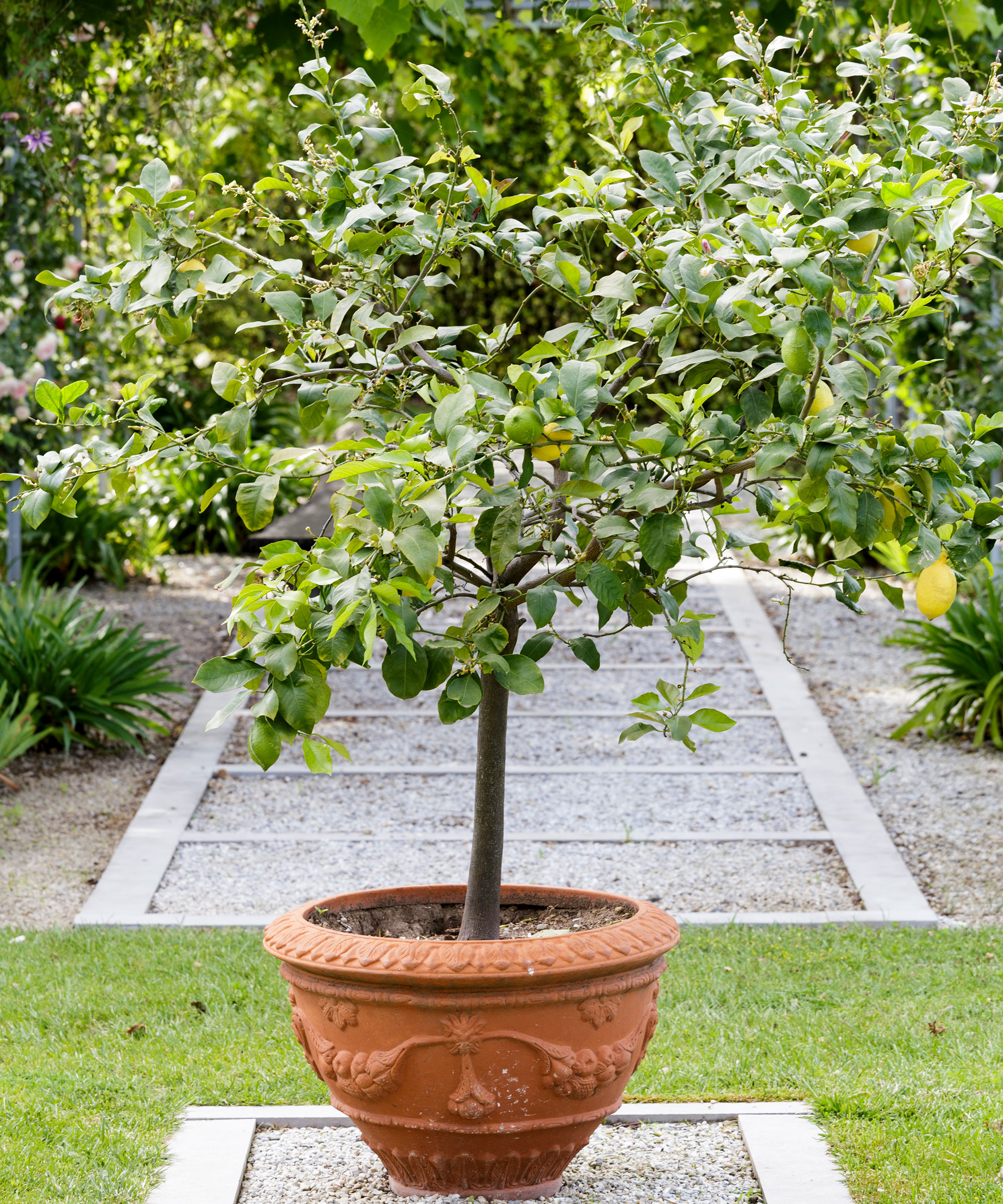
A lemon tree in a pot in the gardens of the summer residence of Elena Piletra. Villa near Lucca in Tuscany, Italy
Terracotta pots filled with zingy, vibrant flowers, citrus trees or architectural palms or yucca plants are hallmarks of a Mediterranean garden.
Include containers in various sizes, smaller pots for lining walls and displaying in groups, and large, oversized containers to make a statement as part of your courtyard ideas.
Ensure any containers have good drainage and fill the bottom of the pots with crocs or stones before adding the compost to aid drainage.
Position the pots in a sunny, sheltered area of the garden, and water only when the compost feels dry. The tender plants can then be moved indoors for winter if you live in cooler climates.

What is a Mediterranean garden style?
Mediterranean garden style refers to the garden features of countries that surround the Mediterranean sea – such as Spain, France, Greece and Italy. Some plants that are grown in the Mediterranean are genuine Med natives, while others are from similar climates in California, South Africa or South America, but all are adapted to the Mediterranean climate.
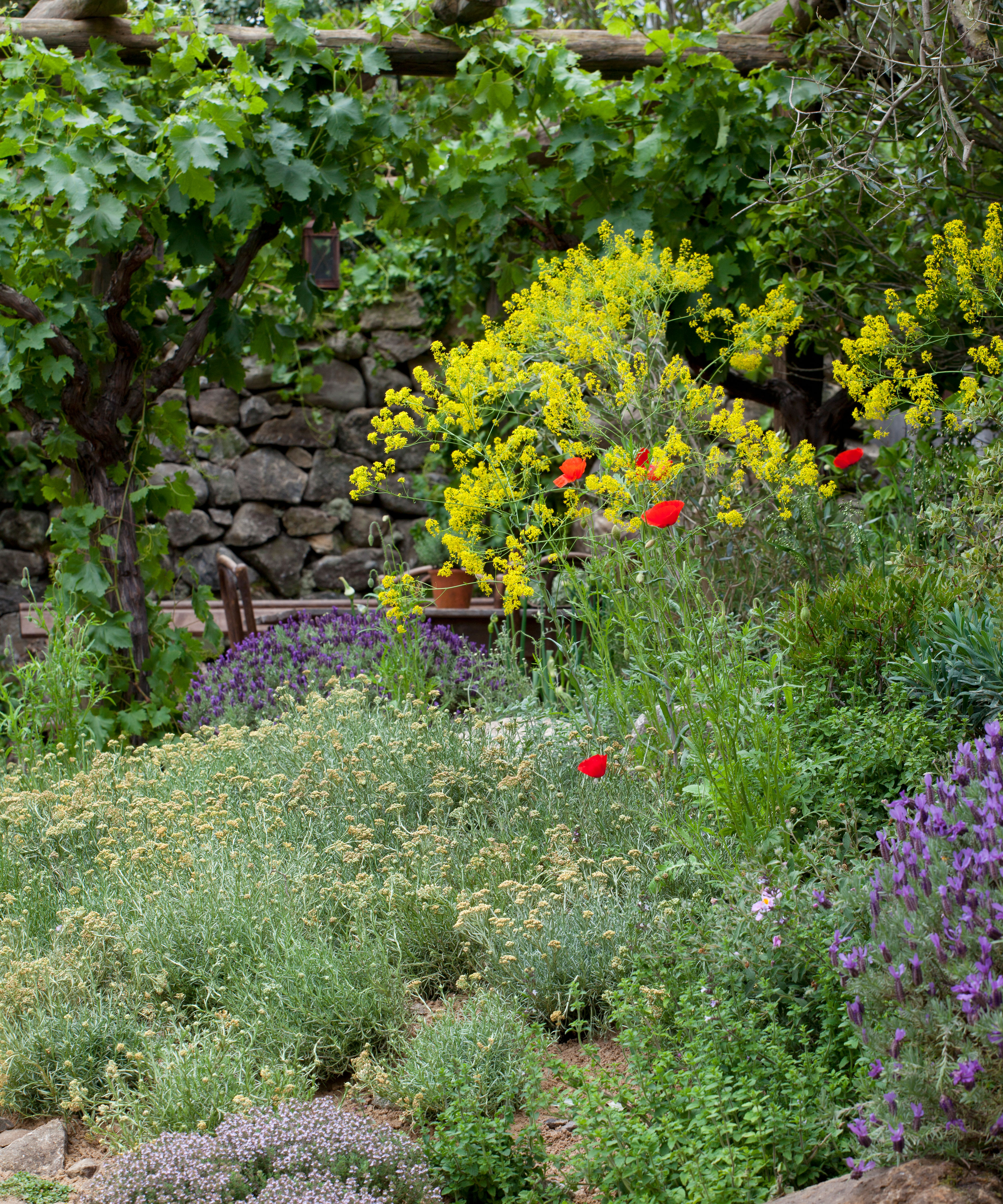
In the wild Mediterranean, plants enjoy damp and relatively mild winters followed by dry, sunny summers. Many grow through the winter, flower in the spring, set seed then take a break.
In a Mediterranean garden, most plants enjoy sunshine and good drainage and, although they need winter moisture, they hate winter sogginess. Many, especially bulbs, appreciate dry – even parched – summer soil.
What plants grow in a Mediterranean garden?
There are many options for plants that grow in a Mediterranean garden. Many of the plants you see in these summer hot spots will grow quite happily anywhere if given a sunny, sheltered spot and soil with good drainage.
And as climate change starts to have an impact on gardens, more and more areas already have similar growing conditions – low rainfall, summer sunshine and dry winters – to those in the Med, making plants native to this area ideal for a hosepipe-free plot.
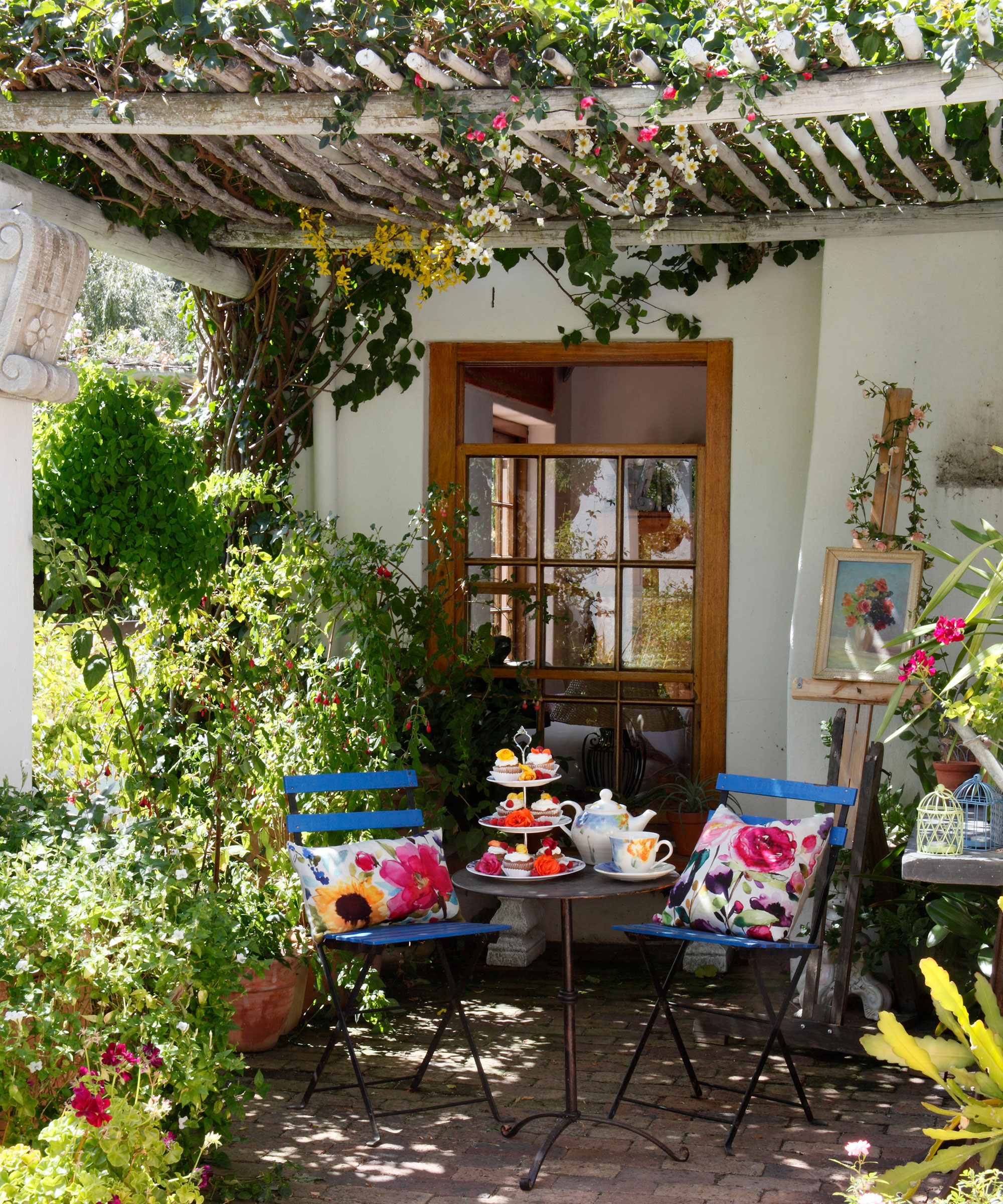
A few simple terracotta pots – the classic choice for Mediterranean garden containers – planted with colorful pelargoniums and freshly-leaved succulents will recreate the spirit of a Greek balcony.
Or you could transform a sun-baked seating area into an Italian-inspired terrace, surrounding it with herbs like oregano, thyme and bay. Add a pergola, then plant scented climbers or grow a vine – the leafy canopy will also provide welcome dappled shade.
How do I make my garden Mediterranean?
Creating a Mediterranean garden is easier than you might think. If you have room to spare and a mild location with free-draining soil, you could easily mimic the style.
Use a tree, such as an olive or a hardy palm as a focal point, then add shrubs and perennials, such as the Portuguese laurel, euphorbias and genista. Plant fragrant flowers like jasmine and lavender – as their perfumes are released, they’ll conjure up happy memories of sun-baked escapes.
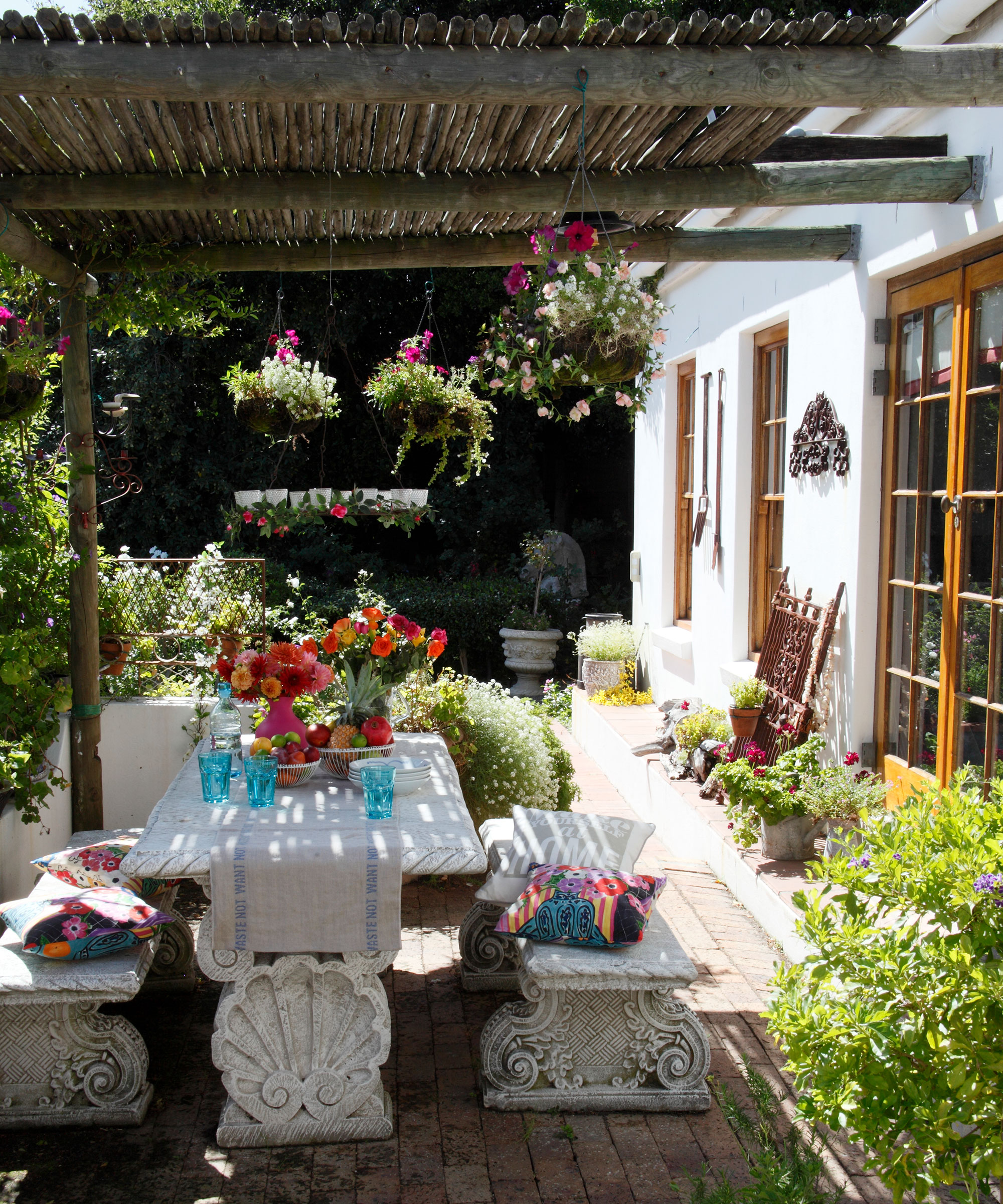
Mediterranean winters tend to be cold and dry, so native plants can be surprisingly hardy. But when prolonged cold is combined with wet, they will suffer. If your soil isn’t naturally free-draining, be sure to dig in plenty of grit; alternatively, consider building some raised beds to improve drainage.
Growing these plants in containers is another option, particularly if you have heavy clay soil, or live somewhere with high rainfall. Pots also have the bonus of being easily moved under cover in fall.
Whether you simply want to add a touch of the Med or embrace its planting wholeheartedly, Mediterranean garden ideas are surprisingly easy to create.
Consider also how to create an Italian garden by following our simple guide, incorporating planting tricks for an elegant yard that can help you to escape to the Mediterranean.
Sign up to the Homes & Gardens newsletter
Design expertise in your inbox – from inspiring decorating ideas and beautiful celebrity homes to practical gardening advice and shopping round-ups.

Jennifer is the Digital Editor at Homes & Gardens. Having worked in the interiors industry for several years in both the US and UK, spanning many publications, she now hones her digital prowess on the 'best interiors website' in the world. Multi-skilled, Jennifer has worked in PR and marketing and occasionally dabbles in the social media, commercial, and the e-commerce space. Over the years, she has written about every area of the home, from compiling houses designed by some of the best interior designers in the world to sourcing celebrity homes, reviewing appliances, and even writing a few news stories or two.
-
 Jennifer Aniston’s bedroom is a ‘goldmine of simple sumptuousness’ – it’s 2025’s version of quiet luxury and so easy to recreate
Jennifer Aniston’s bedroom is a ‘goldmine of simple sumptuousness’ – it’s 2025’s version of quiet luxury and so easy to recreateThe actress's unique space features James Mont-designed lamps and a raised bed inside a walnut plinth – but you can recreate its understated sophistication
By Megan Slack Published
-
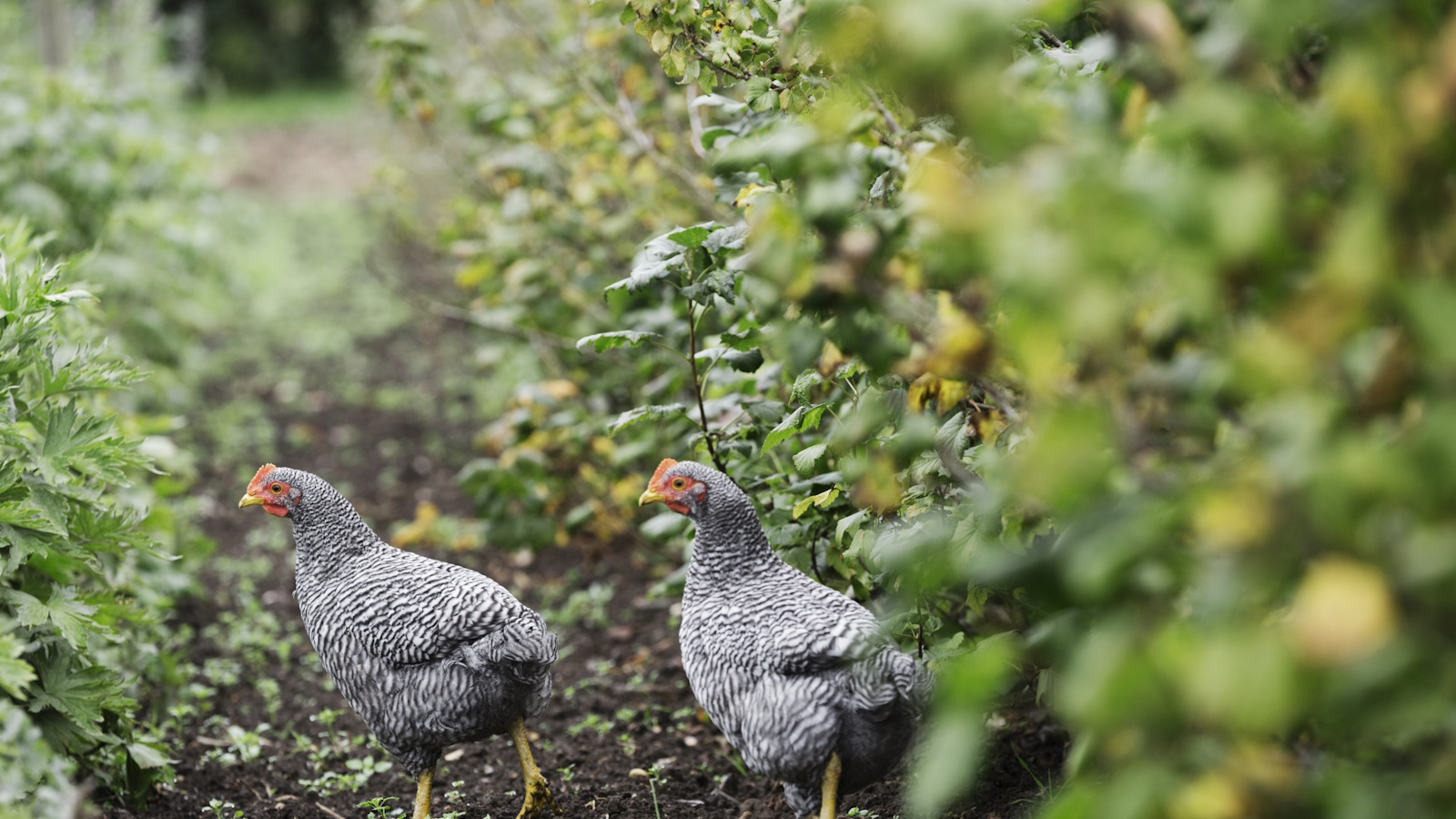 How to keep chickens out of flower beds – 6 tried and tested methods that homesteaders swear by
How to keep chickens out of flower beds – 6 tried and tested methods that homesteaders swear byGive your flower beds a fighting chance by implementing these preventative measures
By Ciéra Cree Published
